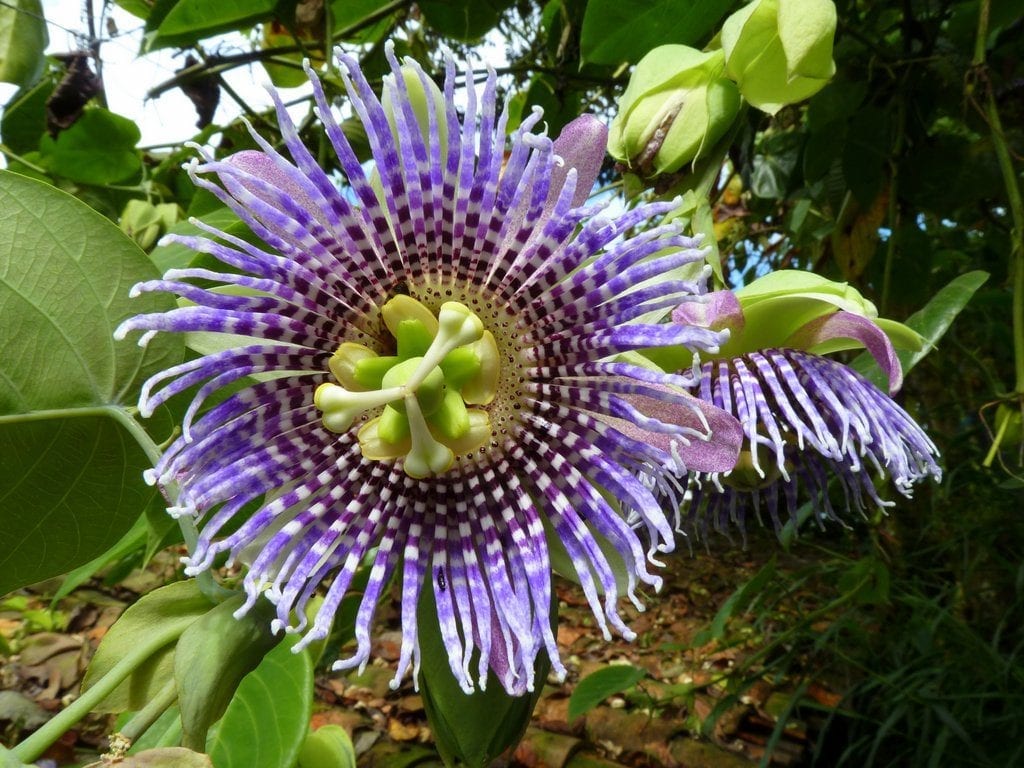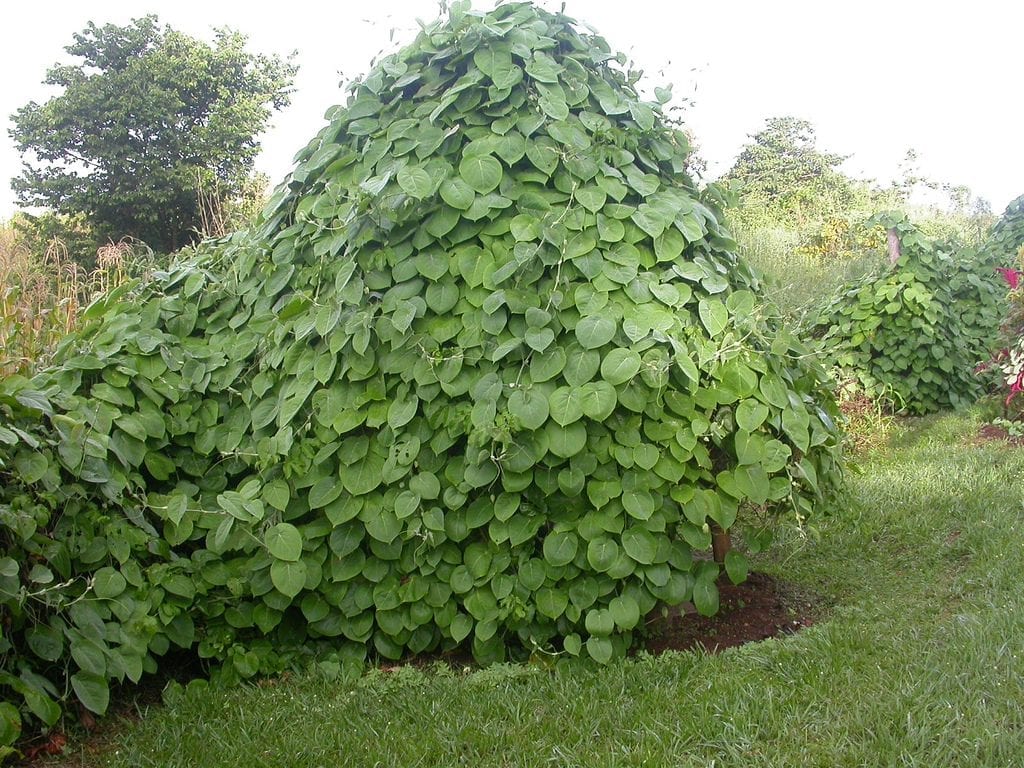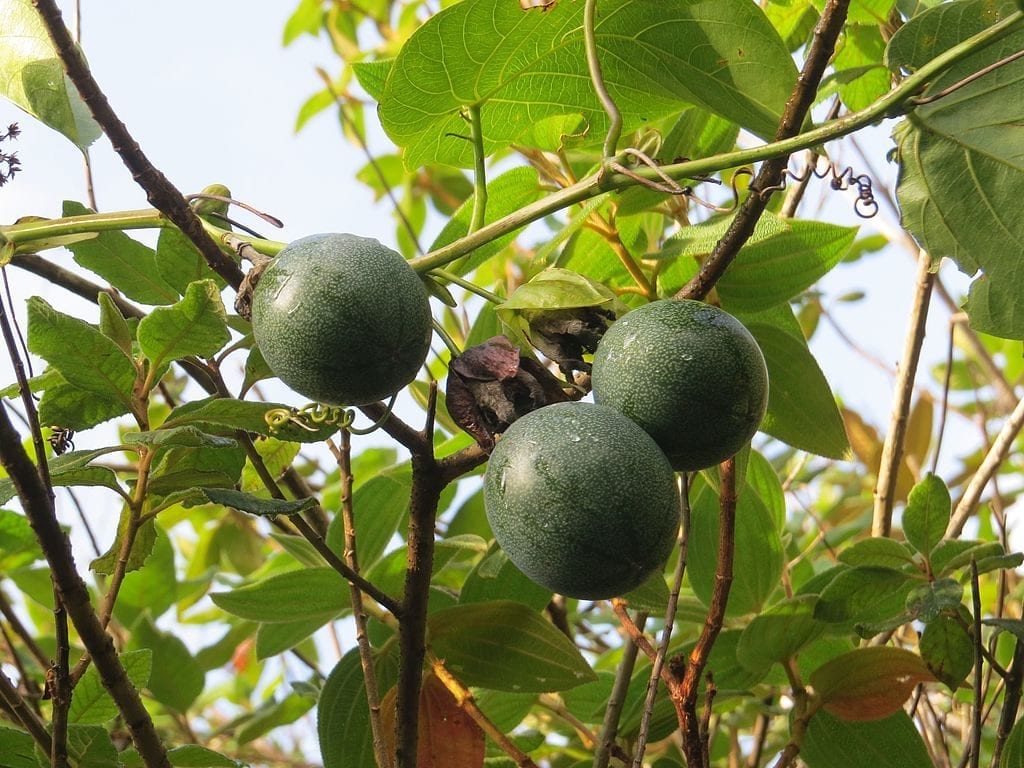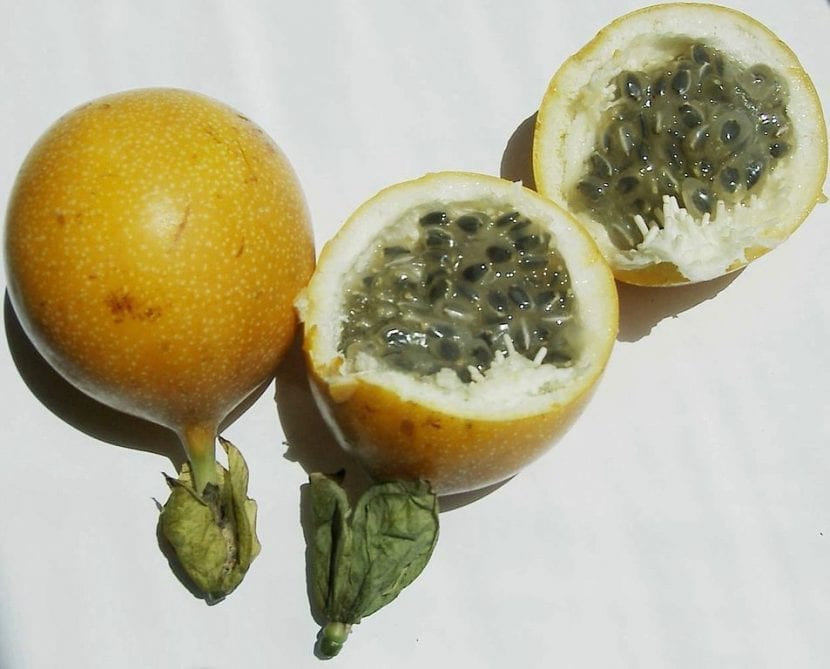
Image - Flickr / Andreas Kay
La Chinese pomegranate It is one of the most vigorous (and beautiful, by the way) climbers that we can have in a garden. Thanks to its tendrils, it clings tightly -although without hurting- to its support, be it a wall, a tree, or a lattice.
As if that were not enough, the fruits it produces are edible. In fact, not only do they taste very pleasant, they are also very nutritious. Would you like to be able to harvest them? Take note of what I'm going to tell you next,
Origin and characteristics

Image - Flickr / Scamperdale
The Chinese pomegranate, also known as granadilla, parchita, parcha dulce or parchío, is an evergreen climber native to Mexico to the western part of South America. Its scientific name is Passiflora ligularis, and has whole and ovate leaves, with a size of 8-17cm long by 6-15cm wide.
The flowers are 7-9cm in diameter, with pinkish-white petals. The fruit is ovoid, green when it sprouts and orange-yellow when ripe, and measures 6,5cm to 8cm long and 5,1 to 7cm in diameter. The pulp is yellowish-white to orange, and contains numerous blackish seeds.
Uses
In addition to being used as an ornamental plant, our protagonist is a plant that has other uses:
- Edible: its fruits can be eaten fresh. They contain vitamins A, B2, B3, B6, B9, C, E and K, in addition to minerals such as iron, calcium, copper, phosphorus, potassium, selenium, zinc, and sodium.
- Medicinal: the juice improves digestion and allows you to sleep better.
What are their cares?

Image - Wikimedia / Vinayaraj
Do you dare to have a copy? If so, we advise you to take care of it as follows:
- Location: it must be outside, in semi-shade. You can get the sun, but only in the early morning or at sunset, which is when it is weakest.
- Earth:
- Pot: mix 60% black peat with 30% perlite and 10% of earthworm humus.
- Garden: the soil must be fertile and have a good drainage.
- Irrigation: about 4 times a week in summer, and every 3 or 4 days the rest of the year.
- Subscriber: important to pay throughout the warm season with Organic fertilizersand guano for example. Of course, use liquid fertilizers if you are going to have it in a pot since this way the drainage will continue to be good.
- Multiplication: by seeds in spring.
- Rusticity: resistant up to -3ºC. If you live in a colder area, protect in a bright room without drafts until spring returns.

Image - Wikimedia / Fibonacci
What did you think of the Chinese pomegranate?